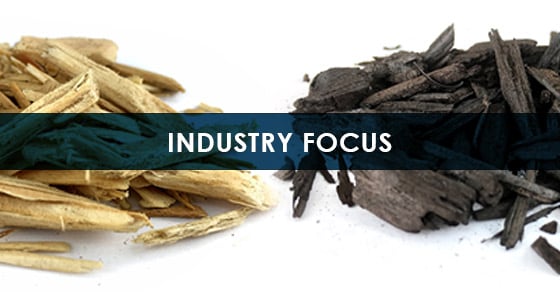In partnership with the US Forest Service, the Wisconsin Department of Natural Resources (DNR) is hosting a webinar to provide relevant information on biochar production.
Designed for representatives from the forest industry, city officials, forest resource managers, and anyone else who would benefit from learning more about biochar’s potential role in managing wood waste, the webinar will provide relevant information on the conversion of wood waste to biochar and activated carbon.
Alex Ebben, FEECO Process Sales Engineer, is one of two speakers. Ebben is a Chemical Engineer specializing in high-temperature thermal processing. He will cover how the conversion to biochar and activated carbon works, as well as provide an overview on how these two materials and their associated costs differ.
Interest around biochar and activated carbon has been growing in recent years, as a result of the diverse benefits these carbon-based materials can offer in numerous applications.
About Biochar and Activated Carbon
Biochar and activated carbon are produced by upgrading biomass via pyrolysis in an indirect-fired rotary kiln (sometimes also called a calciner or pyrolysis kiln).
Dried biomass is fed into the sealed environment of the indirect kiln, where high temperatures thermally decompose the organic portion of the material to form biochar.
By further devolatilizing/carbonizing the material at higher temperatures and injecting steam into the process, the biochar can be further upgraded to activated carbon.
In addition to feedstock characteristics, processing conditions are used to control the specifications of the resulting product.
Biochar Applications
Biochar’s porous surface structure and chemical properties make it ideal in soil amendment applications. As a soil amendment, biochar can actually rebuild degraded soils – a promising endeavor for much of the world’s overworked and depleted soils. It can also reduce nutrient runoff, improve water retention, increase microbial activity, moderate soil acidity, and more.
While biochar initially entered the market for its potential as a soil amendment, its unique properties quickly led it to be considered in an array of other applications:
- Removing contaminants (particularly pharmaceuticals) from water
- Increasing biomethane production during anaerobic digestion
- Improving hygiene conditions and digestion in animal husbandry
- Enhancing air quality and fighting air pollution
Activated Carbon Applications
Activated carbon can also serve a diverse set of applications as a high-powered (and often reusable) adsorbent. It exhibits an extremely high surface area due to its porous surface structure, and also has attractive forces that help to pull in and retain minute particles of many different types. As a result, it is already used in many applications, and is being investigated for several more. Some of the applications that already employ activated carbon include:
Creating a More Circular Economy
The potential benefits of utilizing biochar and activated carbon are two-fold; not only could they play an important role as value-added products serving to improve the environment (among other things), but they would also provide an important outlet for waste materials that otherwise have no market.
The forest industry in particular serves to benefit greatly from upgrading residuals and waste products, as it would provide a higher-use path for woody biomass resulting from the manufacturing of wood-based products, management of storm-, disease-, or insect-damaged forests, and other residuals.
Beneficial reuse of wood waste and residuals would help to close the loop on forestry resources while providing added value to ecosystems and economies.
FEECO’s Role in the Biochar Industry
FEECO has been on the forefront of advancing biochar projects for years, conducting various tests in batch- and pilot-scale kilns in the FEECO Innovation Center to develop baseline material standards and production procedures. The results were compiled into a paper and poster presentation, which Ebben presented in partnership with colleague Michael Eidge at the USBI Biochar Conference in 2018. The paper was entitled “Critical Characteristics of Wood-Based Biochar Correlated with the Pyrolysis Process in an Indirect Kiln.”
FEECO uses data gathered during testing in the Innovation Center to build clients custom indirect rotary kilns for processing biomass and other cellulosic materials into biochar and activated carbon.
Conclusion
Biochar and activated carbon present a valuable opportunity to improve resource management and add value to the forest industry (and other industries) at the same time. The webinar hosted by the Forest Service and Wisconsin DNR is a timely and pertinent discussion for the industry.
Those interested in attending can register for the webinar here. For more information on FEECO’s biochar- and activated carbon-related services and equipment, contact us today!


